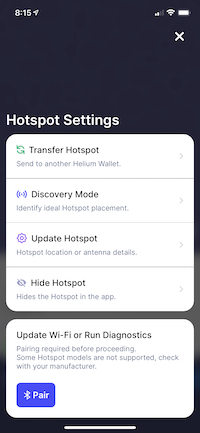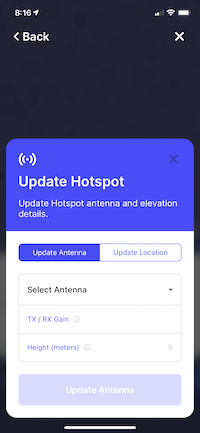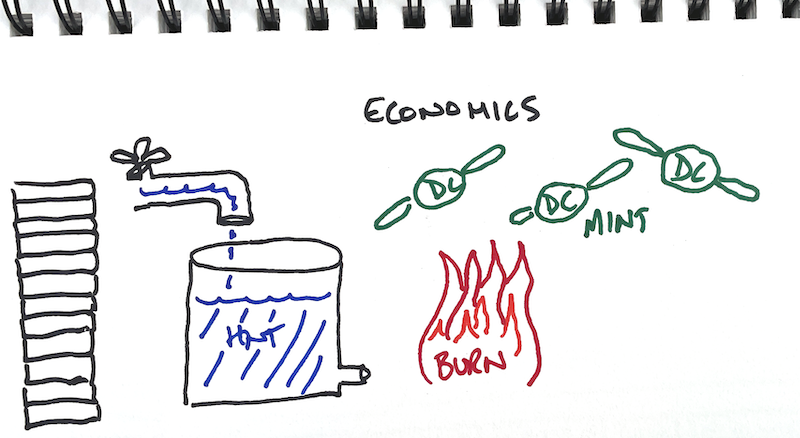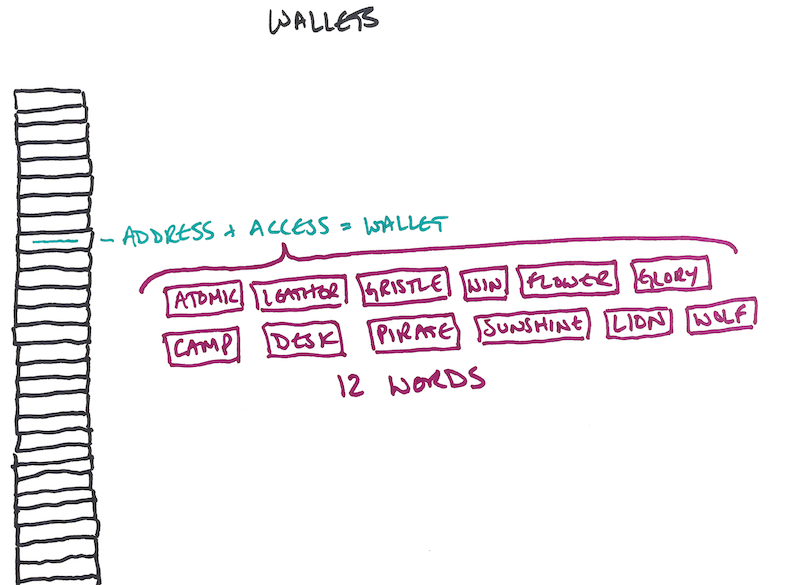Ok, so you just found Helium and are wondering what to do next? Let’s walk through the whole system so you’ll know what to do and what NOT to do. We’ll go through the ecosytem of Helium, the incentive of HNT, explain Helium Wallets as well as the Burn and Mint equilibrium, and make sure you get started the right way the first time.
The Ecosystem
Helium is a blockchain that encourages you to provide provable wireless coverage for the Internet of Things (IoT).
This wireless coverage is NOT WiFi, and it won’t give you internet*.
Helium allows a wide variety of devices, called sensors (door open/close, parking lot sensor, temperature & humidity, etc), to transfer their data onto the internet. Ultimately, Helium aims to be a ubiquitous network that allows anyone to easily install a wireless sensor that connects to the internet. For examples of how Helium is being used today, you can see examples ranging from CO2 monitoring to tracking vehicles to activity monitoring, and even a better mousetrap.
In order to provide coverage, anyone can order and deploy a Helium-compatible Hotspot. Hotspots are a combination of computer and radio and are made by many different manufacturers, from RAK to Bobcat to Syncrobit, Seeed, Kerlink, and more.
Inside the Hotspot, the computer runs the blockchain mining operations and tells the radio what and when to broadcast. The radio does what the computer tells it, and it reports to the computer what it “hears”.
In return for mining, broadcasting, and receiving, each Hotspot earns some portion of the 2,500,000 HNT (Helium Network Token) currently distributed every month.
Helium is run by VERY smart engineers who have built an incredible system. If you see something that doesn’t make sense, it may take some time to understand it. Know that Helium explains everything as if you’re an engineer who already understands what they’re explaining. It always makes sense, but it can take a long time and some effort to understand. That’s one of the things I try to help you with on this site. 🙂
If you’d like to understand as part of a group, consider joining the Gristle Crüe, where we meet weekly on Zoom and have a private Discord to bring you up to speed and keep you at the bleeding edge of what’s going on.
Cool, I think I get it. So…why is everyone I talk to about Helium so bonkers about it?
The Incentive: HNT
Helium Network Tokens, or HNT, are what drive this whole train. The better the coverage you provide (pages and pages have been written on how to provide excellent coverage), the more HNT you earn. HNT is a cryptocurrency and can be traded for many other currencies, including US dollars. That’s mostly why people are going so bonkers for Helium. That, and the fact that it’s the leading edge of a wave of technology that’s about to change our entire society, but…let’s leave that for now and focus on the fundamentals.
Hotspots earn HNT for 4 different actions:
- Creating a Challenge
- Beaconing a Challenge (you’re acting as a “Challengee” in this case)
- Witnessing a Challenge
- Passing Data on the Network
Need more info on the PoC cycle of Challenges, Beacons and Witnesses? Go deep here.
For turning HNT into USD I mostly use Binance.us, but I’ve also used Bilaxy. In general, crypto exchanges can be unreliable. If you do trade HNT for anything, I suggest getting it on the exchange, making your trade, and pulling your earnings off the exchange in as short a time as possible.
For buying Hotspots, check out Helium Deploy, here.
At the time of this writing, you could buy 1 HNT for about US$20.
Let’s Talk Helium Economics
As a casual user, you can basically bookmark this whole Economics section with: The price of HNT will be speculative until we hit mass network adoption, then the price will de-couple from crypto and reflect an actual market value. IF that happens, it will probably be a major source of wealth creation for holders of HNT.
Helium manages the supply of HNT in a few ways. The longer version is here, in HIP 20. The shorter version is below.
First, there’s a maximum supply; no more than 223 million HNT will ever come into existence. Every 2 years, the amount of HNT made available for distribution is cut in half, a process called (wait for it…) Halving.
Until Aug 2023, the Helium Network has a target production rate of 2,500,000 HNT/month. That HNT gets distributed amongst investors, Hotspot owners, Validators, and Network Data Transfer. More on those in a minute.
The second way Helium manages the supply is with a Burn & Mint Equilibrium. What the heck is that? We’ll have to backtrack a bit here. Remember when I said you could use a sensor to transfer data on the Helium network? Well, you pay for the data not with HNT, but with Data Credits (DC). The only way to get Data Credits is by “burning” HNT.
When you “burn” and HNT, you “mint” a Data Credit.
The value of a Data Credit doesn’t change (it’ll always cost $0.00001 per DC), but the value of HNT can swing wildly.
As the Network starts getting more use, more HNT will be burned to create DC. With less HNT on the market, the price of HNT will (probably) go up. As the price of HNT allows you to buy more Data Credits to use the Network, you need less and less HNT to do the same amount of work.
Of course, at some point, you run out of HNT, right? I mean, there IS a cap to how much will be mined.
Nope. There’s one more management tool when it comes to HNT, and it’s called Net Emissions. Net Emissions is one of those economic tools that flummoxes most of us and fascinates economists.
For the geekier types…Net Emissions means that every time Data Credits are used (and HNT is burned), an equal number of HNT will be minted to replace that. The catch? There’s a cap to the total HNT that can be minted per epoch. What’s an “epoch”? Short version: About 30 minutes. Long version here. With a cap to Net Emissions, Burn & Mint can still be a useful deflationary force.
Technically, we could still run out of HNT, but it’ll take 50 years and my guess is that within 20 years the idea of Helium will be as antiquated to us now as pagers currently (2022) seem.
Ummm, enough about economics…where do I keep my HNT? I heard something about a wallet?
A “Wallet” is really just access to an address on the blockchain. It’s not a physical thing. Most people use the Helium app to create and manage their wallet. When you first download the Helium app on your phone and create a wallet, you’ll be instructed to write down 12 words. Those 12 words are the ONLY way to access your wallet. If you lose those words, you lose access to that wallet, and any HNT or Hotspots attached to that wallet. The 12 words are a big deal.
You can sign out of one wallet and sign into another wallet on the same phone; the wallet is NOT locked to your phone. You can’t have both wallets open simultaneously on one phone.
For ease of use, the app also creates a PIN for your wallet. Once you’ve signed in to your wallet on the app, you’ll just need the PIN to access it again, instead of typing in the 12 words each time. Every time you sign out and then sign in again, you have the option to change your PIN. Your 12 words never change.
A Wallet is the controller for a Hotspot; every Hotspot that is earning is attached to just one Wallet. You can have multiple Hotspots in your Wallet, but you can’t have multiple Wallets that split a Hotspot.
Wallets are public; anyone can see your wallet address, how many HNT are in that wallet, and how many Hotspots are attached to your wallet. Since you can have more than one wallet, it’s not a bad idea to have multiple wallets just for a little bit of privacy. Use one to manage your hotspots, and another wallet with no hotspots attached to it as a “savings” account where you routinely transfer your HNT to. It’s not a foolproof system, but it does make it a little more difficult for anyone to see just how much HNT you’ve earned.
Ok, cool, so I’ve got a wallet and a hotspot. What do I do now?
Managing Your Hotspots
You manage your hotspots from your wallet. When you’re signed into your wallet on the Helium app, you can change, or “re-assert” their location. You can change the stated elevation of the antenna. You can change the stated gain of the antenna. As of early Sept 2021, none of those reported stats matter, but they all eventually will feed into the earnings algorithm, so it’s a good idea to accurately state your elevation and antenna gain.



Speaking of changing location, I think it’s reasonable to “assert”, or place your hotspot within about 150 meters of where it actually is. You don’t have to be any more accurate than that. This will give you (or your hosts, if you’ve placed your hotspot at someone else’s location) privacy.
Currently and for the foreseeable future, while the Helium App and Explorer will only show you the location of a hotspot down to a res 8 hexagon (a res 8 hex is about 1,000 meters across). Still, the Helium API allows anyone with an understanding of the code to see more or less exactly where you’ve asserted your hotspot. For my clients, I usually suggest asserting it at the closest street intersection within 150 meters.
Wait, did you say “antennas”? Aren’t those the single most important thing ever in Helium?
Antennas
Antennas are one of those things that seem like they’re really important, but they’re not. They’re kind of similar to how you looked in high school; zero relation to what you ended up doing in real life. I’ve written a bunch about antennas to help dispel the notion that they have a huge impact on earnings. They don’t.
If you want the best antenna out there for most situations it’ll cost $150 plus shipping. It usually won’t make more than a 15% difference over a cheap piece of sh*t. I like nice things, so that’s what I use, but most of the time it won’t be magic. If you just want an antenna that works very well but doesn’t cost as much, try anything from McGill.
The single biggest mistake people make when buying an antenna that can have a negative impact on earnings is to think that higher gain = better antenna. It doesn’t. A higher gain doesn’t get you anything except a narrower radiation pattern. Occasionally, if you’re trying to punch through one or two dense strips of trees, a higher gain can help. Mostly, they just hurt.
But, but, but, Witnessing makes me the majority of my HNT, and I have to have a great antenna to Witness, right?
Nope. I wrote about that in Can I Get A Witness?
Ok Nik, so what actually makes a difference?
Location
The location of your hotspot is the number one determiner of your HNT earnings. If you’re in a place with optimal density and volume of hotspots you’ll earn more. If you’re in a place with too few hotspots that your hotspot can “see” you won’t have the opportunity to Witness Beacons. If you’re in a place where it’s too dense you’ll Witness plenty of Beacons, but they’ll be low value.
The density limits are covered by HIP 15 and 17, which is described in the “optimal density and volume” link, above.
I’ve got a HIP 17 explainer video, as does Helium, and just about every YouTuber on the planet. It’s complex, but not impossible. You got this!
A good rule of thumb for minimum volume (number of hotspots your hotspot can “see”) to earn maximally is around .005% of the network.
[Number of Hotspots on the Network] x [.00005] = Minimum number of hotspots your Hotspot should be able to reliably see in order to routinely witness beacons.
That’s neat, although I don’t do math. Is there another way to think about earning more?
Optimizing your Helium Hotspot consists of picking the best location, getting up to the minimum elevation required for that location, and then using the right gear. Each one of those steps is progressively less important. If you want a rough guide for this, start here.
The right gear has very little to do with your earnings, whereas location & elevation are critical. If you’d like help with understanding how to optimize your Hotspot (and make sure you know how and where to move it if needed), I’m available for hire. For about the price of one extra hotspot you’ll know everything you need to know in order to earn the most out of your deployments. You can also join the Gristle Crüe and be part of a community all learning together and helping each other. I built it for you!
Thanks Nik! Just a few more things. WTF is a relay? Is it bad? Can I fix it?
Relay
Having a hotspot be “relayed” means, in short, that instead of your hotspot reporting directly to the blockchain, all of its reporting information gets passed through, or relayed, by another hotspot. This happens because your firewall blocks your hotspots from talking to the interwebz. Your hotspot then has to “relay” all its information through nearby hotspots.
This means the information flow is slower and less reliable, and you’re less likely to earn HNT. Being relayed does not always mean you’ll earn less, although it usually does. If you’re relayed, it’s a good idea to go through @Jason from Discord’s fantastic “Solving the Relay Problem” flow.
Hey, I bought a [insert Hotspot manufacter here] is it the best one?
Miners
Miners, (also called “Hotspots” or “Gateways”) are made by many different manufacturers. They’re all about the same, though in the rush to meet the demand some manufacturers have had more problems than others. You can buy Hotspots here.
In general, I’ve found the RAK V2s to be the best of the lot, mostly because they’ve had the most time to work on their product. Bobcats and Sensecaps are also good, though the Bobcats will need a heat sink if you put ’em outside or in the attic. Nebras are considered the worst of the bunch, though there were high hopes for them early on. With a little fiddling, all hotspots can be improved upon as far as being stable and performing well in the heat.
No hotspot is faster or higher earning than any other hotspot as far as comparing brand/model to another brand/model. When choosing what hotspot to buy, make sure you follow the link above or from Helium’s Approved Manufacturer page as a ton of scammers have popped up to take advantage of your desire for a Hotspot.
One very important thing to note when it comes to Helium Hotspots is that Helium itself doesn’t have any control over the manufacturer.
In general, the process is that a manufacturer applies to the DeWi alliance (a neutral third party entity with no dogs in the fight) for a license to make hotspots. The manufacturer provides a sample product to the DeWi Alliance and makes a bunch of promises about how great its product will be.
Helium is NOT the entity that assess Helium-compatible Hotspots. The DeWi Alliance considers each application and does its best to assess whether or not a manufacturer can do what it claims it can do.
If a manufacturer makes a mistake, or doesn’t do something well, there isn’t a reasonable for Helium to somehow punish that manufacturer; that’s left up to the market. It’s the fairest way possible to administer a decentralized network, though it can be bloody frustrating if you’re the one who bought a unit that never arrives.
Can you tell me about any other weird little details I might need to know?
Connections
Connections between hotspots and antennas can be confusing. There are RP-SMA, and sometimes SMA, and sometimes N‑type connectors. The best way to figure out what you need is to figure out what the connector is on whatever you’re connecting, then get a cable with the opposite gender connector. Yes, it’s that simple. Yes, it also feels risky and frustrating. You got this! If you’d like a table of what connector your hotspot probably needs along with pictures of what it all looks like, go here.
That’s it, most of Helium in a nutshell. Now you know enough to get started on deploying your Helium Hotpots, using your wallet, and contributing to the Network. Let’s do this!
*Technically, the coverage is called LongFi. You don’t need a SIM card to access LongFi, there’s no minimum fee to use the network, and ranges are up to 100 times that of WiFi. It’s very different than WiFi, even though they both transfer information wirelessly.





Leave a Reply